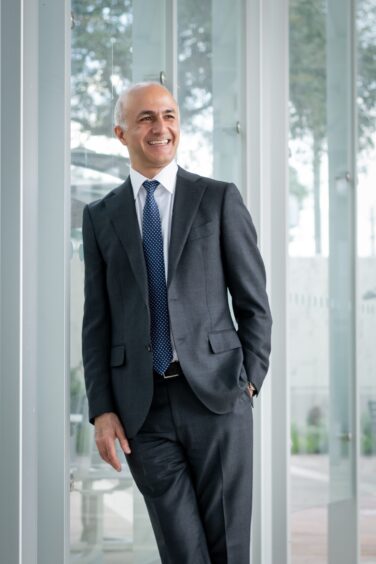As with many previous COPs, this year’s event in Dubai went to the wire. The final sessions ran long and tensions ran high as leaders sought to achieve unanimous support for the language included in the UAE Consensus.
Now that it is concluded, it feels like this year’s COP will be a consequential one – for the first time, the stocktake included a commitment from all countries to ‘drive the transition away from fossil fuels in energy systems.’
While detail on timelines were slim and the final text included a caveat that targets can be set “in light of different national circumstances”, the stocktake does send an unambiguous message that the global energy system must move away from the use of coal, oil and gas for energy.
Tangible commitments
As the event closed, the agreed language around fossil fuels was always going to dominate the headlines, but it would be remiss not to acknowledge the many other important measures introduced in Dubai that will help to drive tangible progress.
The launch of the Global Decarbonization Accelerator (GDA) was significant – it has a series of welcome initiatives including a commitment from 116 countries to triple renewable energy capacity to at least 11,000 GW and double the global average annual rate of energy efficiency improvements by 2030.
The Oil and Gas Decarbonization Charter (OGDC) that formed part of the GDA was equally encouraging. This saw 50 companies – collectively responsible for over 40% of oil and gas production – including over 40 NOCs and independents, commit to zero methane emissions by 2030, to ending routine flaring by 2030, and to achieving net zero operations by 2050 or sooner.
The focus on addressing methane emissions is particularly welcome given the oversized impact it has on global warming (80x higher than CO2 over a 20-year period). Crucially, over $1bn of funding was also mobilised to focus on supporting methane abatement projects.
In the final stocktake, there was also a commitment to accelerate development of low-emissions technology including nuclear, low-carbon hydrogen and CCS. As with fossil fuels, this is also the first time that CCS and low-carbon hydrogen have been specifically mentioned as climate mitigation measures in the final text of the resolution. This can only help to build further momentum in both industries.
From a finance perspective, some progress was also made; a climate loss and damage fund was approved with wealthy countries committing over $400m, while the UAE launched Altérra with a $30bn up-front investment and a goal to mobilise $250bn by 2030. It is a fraction of the trillions that will be required, but it is a big step forward in the right direction.
Delivering ambitious goals
While all these measures are positive and welcome, the ability to call COP28 a categorical success will depend on what happens next; on how leaders of nations and companies interpret the deal and the actions that we all take together.
As Dr Sultan Al Jaber, COP28 President, reiterated in his concluding remarks, “an agreement is only as good as its implementation. We are what we do, not what we say”.
This was a crucial reminder as the stark reality of the climate emergency remains unchanged. Global emissions continue to rise inexorably at a time when we need to cut emissions by 43% over the next 6 years to keep a 1.5-degree trajectory alive.
This means the real work begins today – delivering this step-change will require a huge effort and a sustained focus on some of the ‘boring’ but critical enablers. Finalising critical pieces of policy like the 45Q and 45V in the US, committing to global ISO standards around carbon intensity and lifecycle management, addressing supply chain constraints, and taming inflation worries that could derail ambitions to treble renewable capacity.
It is also abundantly clear that there needs to be a laser-like focus on decarbonising our existing energy systems. This is a huge opportunity that can be achieved using existing proven technology and without the need for new R&D or risky bets.
Take the focus on methane reduction and driving efficiency improvements in our energy system. All of this is possible today, it’s just a matter of prioritising and executing at pace. These steps are often value accretive for companies and in addition to well proven process technologies, can be delivered using sophisticated digital solutions that help to baseline targets, optimise whole systems and verify the improvements in abated emissions.
Practical solutions
At Wood, we are driving reducing carbon intensity on clients’ projects every day. On one project, we helped to avoid 1% of total global flaring. In the Middle East, we have helped one client abate 20m tonnes of CO2 through efficiency improvements and asset enhancement measures.
Similarly, our methane detection solution, Iris Edge, is helping operators across North America to address leaks at pace. In every scenario, the solutions exists and with renewed commitment coming out of COP28, we can get after many of these with focus and intensity.
Right direction
As we reflect on COP28, it’s clear there is still a lot to do and that some key issues were left unaddressed. But it was undoubtedly a step in the right direction and as ever, all progress requires compromise.
There is an old Ernest Hemingway quote that states that ‘change happens gradually, then suddenly’. As eyes turn to next year’s COP in Baku, Azerbaijan – a country that relies on fossil fuels for over 90% of its exports – the defining legacy of COP28 may be two-fold. For the first time, it normalised a formal commitment to transition from fossil fuels and it delivered a series of important measures that will drive further momentum behind our low-carbon journey.
If that becomes the new bar for all future COPs to try and meet, then transformational change may indeed come suddenly.
Recommended for you




 © Supplied by Wood
© Supplied by Wood






